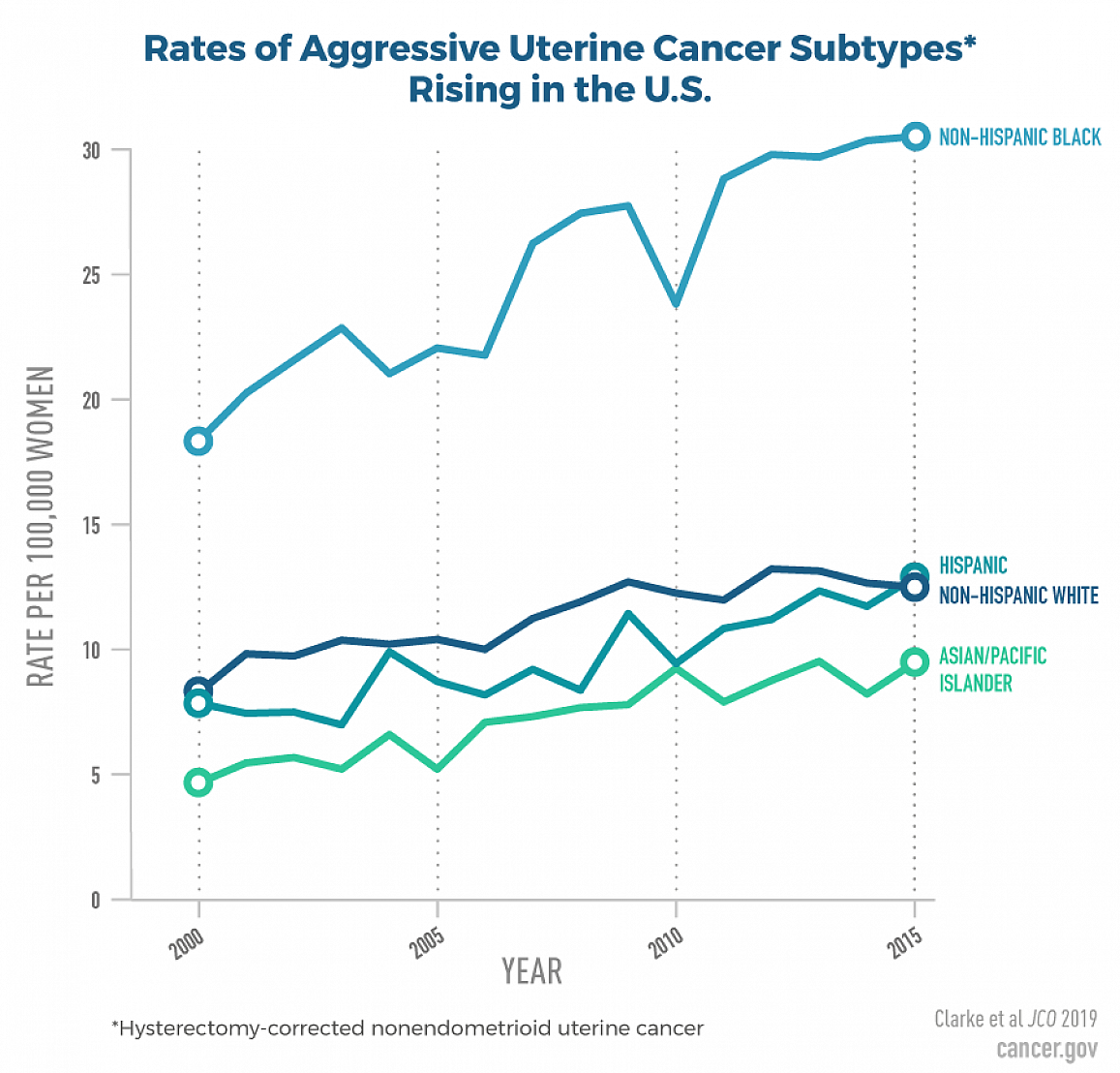Study shows incidence rates of aggressive subtypes of uterine cancer rising
New findings from a study by researchers at the National Cancer Institute (NCI), part of the National Institutes of Health, show that U.S. incidence rates for aggressive subtypes of uterine cancer rose rapidly among women ages 30 to 79 from 2000 to 2015. The findings also reveal racial disparities, including higher incidence of these aggressive subtypes and poorer survival — irrespective of subtype and cancer stage — among non-Hispanic black women than among women in other racial/ethnic groups.
The study, published May 22, 2019 in the Journal of Clinical Oncology, used population data from NCI’s Surveillance, Epidemiology, and End Results (SEER) database to evaluate trends in uterine cancer incidence rates for women overall and by race and ethnicity, geographic region, and histologic subtype (subtypes differentiated by how tumor tissue appears under a microscope). The authors corrected for hysterectomy prevalence, using data from the Behavioral Risk Factor Surveillance System, in estimating incidence rates of uterine cancer because women who have had a hysterectomy are no longer at risk for developing the disease. Many past studies of uterine cancer incidence did not include such a correction.
“Incidence rates of uterine cancer have been rising, and there have been previous reports of racial differences in incidence and survival rates, with disparities observed for non-Hispanic black women,” said Megan Clarke, Ph.D., lead author of the study and a postdoctoral fellow in NCI’s Division of Cancer Epidemiology and Genetics. “But few recent studies have corrected for hysterectomy, which can vary by race and ethnicity and by region. Correcting for hysterectomy prevalence gives us a more accurate picture of trends in overall incidence, as well as rates by race and ethnicity.”
This page was last updated on Friday, January 21, 2022
